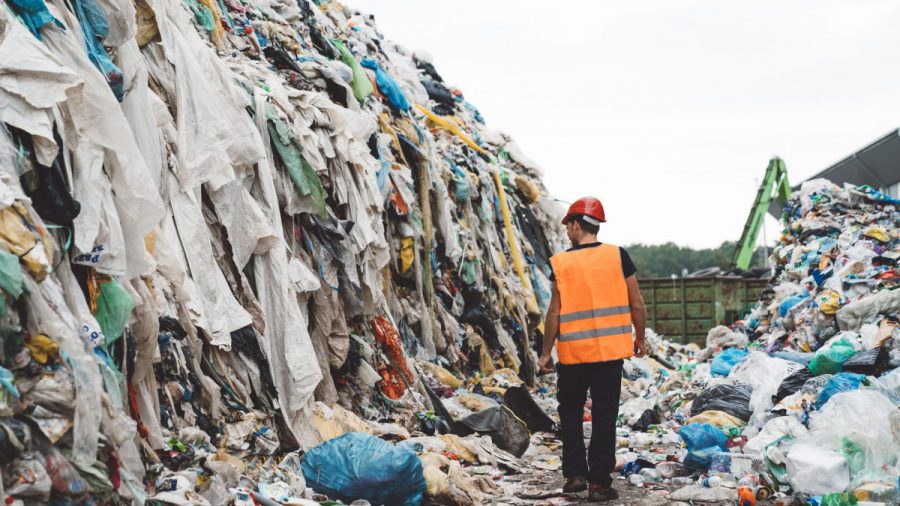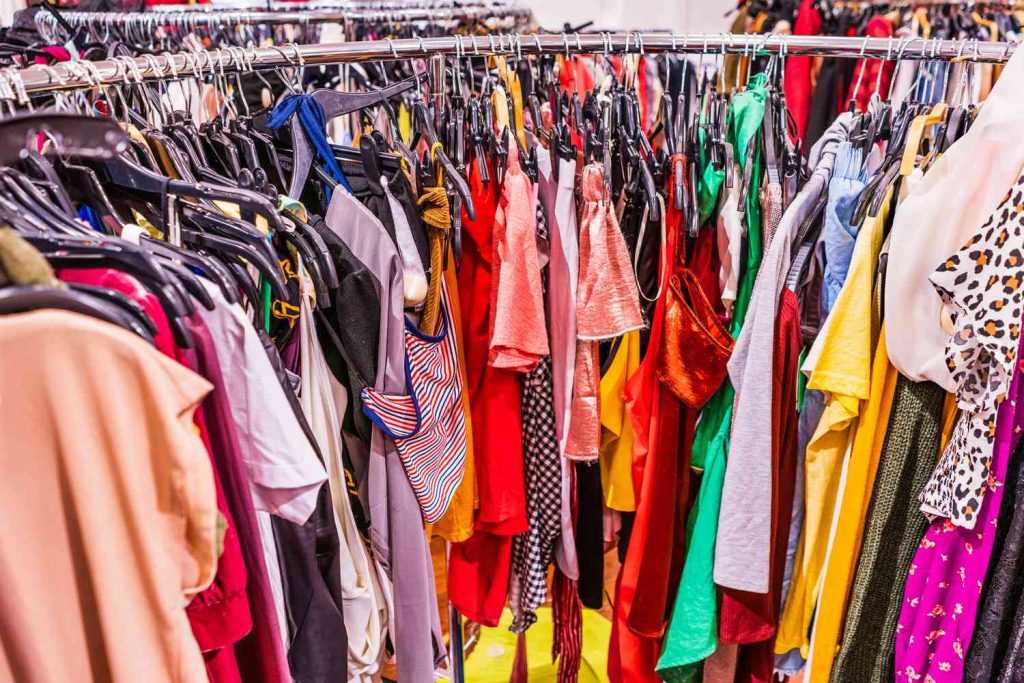What are Fast Fashion’s Effects on the Environment? Why is fast fashion terrible for the environment? Why is Fast Fashion bad? The report overviews the fast fashion market worldwide from 2020 through 2025, forecasting up to 2025. It is estimated that the market value of fast fashion will reach 40 billion U.S. dollars by 2025.
Let’s take a closer look at these questions and explore possible solutions. In this article, we’ll examine the environmental effects of fashion and the fashion industry as a whole. We’ll also examine the ethical and social implications of fashion consumption. The effects of fast fashion are far-reaching, and consumers should consider alternatives to this fashion industry.
What is Fast Fashion?
Fast fashion production is an example of heavy consumerism, but its effects on the environment go beyond the fashion industry. The dye used in garment manufacturing is harmful to water supplies, factories fail to adhere to safety protocols and underpaid workers.
Several organizations and trade unions are working together to stop fast fashion. The Clean Clothes Campaign is one example. By donating clothes, people can help combat this problem. Educating people about the problems of fast fashion will help reduce the amount of harmful waste that the industry produces.
The fast fashion industry relies on cheap labor, often from developing countries. It relies on unethical labor practices and lax regulations. One-third of the garments produced for the fast fashion industry are produced in China.
These garments contribute to massive land degradation and air pollution. The fast fashion industry is the largest employer globally, with over one billion people employed in the sector. The global fashion industry employs one in six people. Its overproduction and waste disposal results in high carbon emissions and wastewater.
The impact of fast fashion on the environment is not only limited to a company’s financial bottom line. Additionally, it affects workers’ quality of life in the industry and residents of affected communities. The study published in Nature Reviews Earth & Environment highlights the environmental impact of fast fashion. However, there are many ways consumers can mitigate this impact.
Why is fast fashion bad for the environment?

We all know that fast fashion is not sustainable. But did you know that fast fashion also contributes to textile pollution? According to the United States Environmental Protection Agency, fast fashion is characterized by cheap labor, mass production, and a lack of environmental equity.
Environmental justice, in other words, is a goal of environmental equity for all groups. It is essential because environmental justice is a human right, and everyone deserves access to clean water, healthy food, and a safe home. The consumption of fast fashion also causes a lot of fabric waste in landfills.
This industry creates enormous amounts of carbon emissions, mainly through the production and shipping of clothes. Fast fashion increases global warming since it results in unsustainable waste. Approximately 1.2 billion tonnes of carbon are released each year by this industry.
These emissions, along with the pollution caused by the production of fast fashion, are detrimental to human health and the environment. In addition to contributing to the destruction of the environment, fast fashion is also costly, affecting workers’ quality of life.
Fast fashion also contributes to environmental damage, mainly due to its poor quality and unsustainable manufacturing practices. Because it’s so easy to replace clothes, people are more likely to discard them.
In 2014, people bought 60 percent more garments than they did in 2000 but lasted only half the time they would have if they had been given the same opportunity to choose more sustainable clothing. Moreover, the amount of plastic that goes into the ocean after washing clothes is staggering.
Environmental Impact of Fashion
The global apparel industry is notorious for its high production levels. However, the recent surge in production has led to increased environmental impact. Companies such as H&M Group have pioneered the concept of fast fashion.
While these clothes may be affordable and attractive to customers, they harm the environment. Here’s how you can reduce your environmental impact through fast fashion. Read on to learn more about these companies and how they make clothing.
The fashion industry accounts for 10% of all global greenhouse gas emissions. Most of the textiles used for fast fashion end up in landfills. The production of fast fashion clothing also releases large amounts of plastic microfibers, contaminating nearby water sources and soil.
The vast majority of fast fashion garments are made from synthetic fibers, which use up to 70 million barrels of oil annually. This pollution is exacerbated because certain washing clothes contribute to the problem.
As a result of the rapid production of fast fashion clothing, it contributes to the massive waste that comes with it. The fashion industry ranks second in terms of pollution after the oil industry.
According to Nikolay Anguelov, author of The Dirty Side of Fast Fashion, the fashion industry is the second-largest water polluter. In 2015, it produced 706 billion kilograms of carbon dioxide. It is equivalent to the emissions from 185 coal-fired power plants.
Negative Impacts of the Fashion Industry
The fashion industry is one of the largest water consumers in the world. Approximately 700 gallons of water are used to produce one cotton shirt, and 2,000 liters are used to make a pair of jeans.
Textile dyes also pollute the water, as they contain toxic chemicals that end up in the environment. Insufficient environmental safeguards also lead to chemical leaks into waterways, posing a severe health risk to workers and farmers.
The fashion industry also generates considerable amounts of waste. The production of clothing results in about 92 million tons of waste a year. Some of these garments are even disposed of in landfills. The fashion industry contributes to rising sea levels and climate change.
The industry’s most significant impacts on the environment are caused by the production of raw materials and the processing of clothing. While these impacts are not directly related to human health, they contribute to many countries’ environmental degradation.
Using cheap labor and environmentally-damaging processes has helped the fast fashion industry flourish in recent years. As a result, clothing production generates massive greenhouse gas emissions, depletes water sources, and releases hazardous chemicals into the environment.
The fashion industry is responsible for more than 10% of global carbon emissions and pollutes the world’s waterways. Furthermore, each step of the process produces several harmful chemicals to the environment.
Read Also: Ways to Protect Yourself From the Sun
Fast Fashion Environmental Impact Statistics 2023

The world’s fashion industry has been known to be one of the worst culprits for climate change and poverty. The fast-fashion industry has a colossal environmental impact and is a significant source of carbon emissions.
Thankfully, some brands have committed to using sustainable materials and minimizing the impact of sourcing. Despite the adverse effects of fast fashion, there are many things consumers can do to help the environment.
Even “natural” fabrics are not free of environmental problems in fast fashion. For instance, conventional cotton requires enormous amounts of water and pesticides to grow, which results in drought risks and extreme strain on water basins.
In addition to its environmental costs, fast fashion has also been linked to human suffering. Women from developing countries are forced to work long hours in conditions that are deemed appalling. Their employers often abuse them. And the chemicals used in clothing production raise serious health risks.
There are also health risks associated with the pollution from the process. It is imperative to shift to more environmentally sustainable business models and produce more ethically. To learn more about the environmental impact of fast fashion, visit the following resources.
Fast Fashion Impact on Society?
The fast fashion industry has created a global economy, but it damages society in ways we do not even know. It creates low-paying jobs, a high risk of death on the job, and dangerous working conditions for workers.
These workers are paid low wages and have no human rights. Often, they are forced to work in unsanitary conditions with toxic chemicals and unfair treatment. These garments have adverse effects on society and should be avoided.
In addition to the environmental and health hazards associated with fast fashion production, the industry is also creating a huge waste stream. It is estimated that 85% of textiles produced worldwide are burned. Because fast fashion is inexpensive, it tends to cause high levels of textile waste, accounting for a considerable amount of landfill space.
The industry also produces a high amount of waste, releasing 500,000 tons of microfibers into the ocean annually, equivalent to 50 billion plastic bottles. As a result, the fashion industry could account for 26% of our carbon budget by 2050.
Consumers can support companies that do not violate these standards by purchasing only products made from ethical or sustainable materials. By educating themselves, consumers can help to reduce fast fashion’s negative impact on society. So, how do we combat this industry?
One way to address the ethical and environmental challenges is to purchase items made in countries with a solid social and environmental consciousness.
Fast Fashion Pollution
The multi-billion-dollar fashion industry is causing significant environmental damage by increasing consumption patterns and contributing to the global warming problem. Many people discard clothes they no longer wear, while others put them in landfills.
Many fast fashion companies also discourage second-hand shopping and donate used clothes. Many people cannot afford to purchase new clothes, and they are forced to settle for low-quality clothes made by fast-fashion retailers. It causes a chain reaction that exacerbates the present problems on our planet.
The United Nations Environment Program, or UNEP, is doing its part to combat fast fashion pollution by promoting sustainable apparel innovations. In addition, the organization awards the Young Champion of the Earth prize to entrepreneurs tackling the issue of fast fashion pollution.
The prize includes seed funding of up to USD15,000, tailored mentorship, and intensive training. The UN Environmental Prize went to Kaya Dorey in November 2017, a young fashion designer who introduced sustainable urban street style. The European Union has also made significant efforts to curb fast fashion pollution.
The fast fashion industry is also responsible for substantial water and air pollution. Chemicals used to make these products are thrown into water and land after use. Additionally, fast fashion factories often employ less than minimum wage workers and do not have the best working conditions.
Consequently, the chemical content in these clothes is much higher than those found in traditional textiles. Further, many of these products have a very short lifespan and can even be thrown away.
Conclusion
One of the Fast Fashion Effects on Environment is that the fabric used to make it is not recycled and contaminates the environment. Fast fashion causes massive amounts of textile waste and contributes to the problem of ocean pollution. Despite these challenges, many fashion brands are publicly disclosing their suppliers. Consumers can support companies responsible for minor environmental damage by sharing information about their supply chains. Consumers should also be vigilant about greenwashing. I hope for a better future on Earth.

